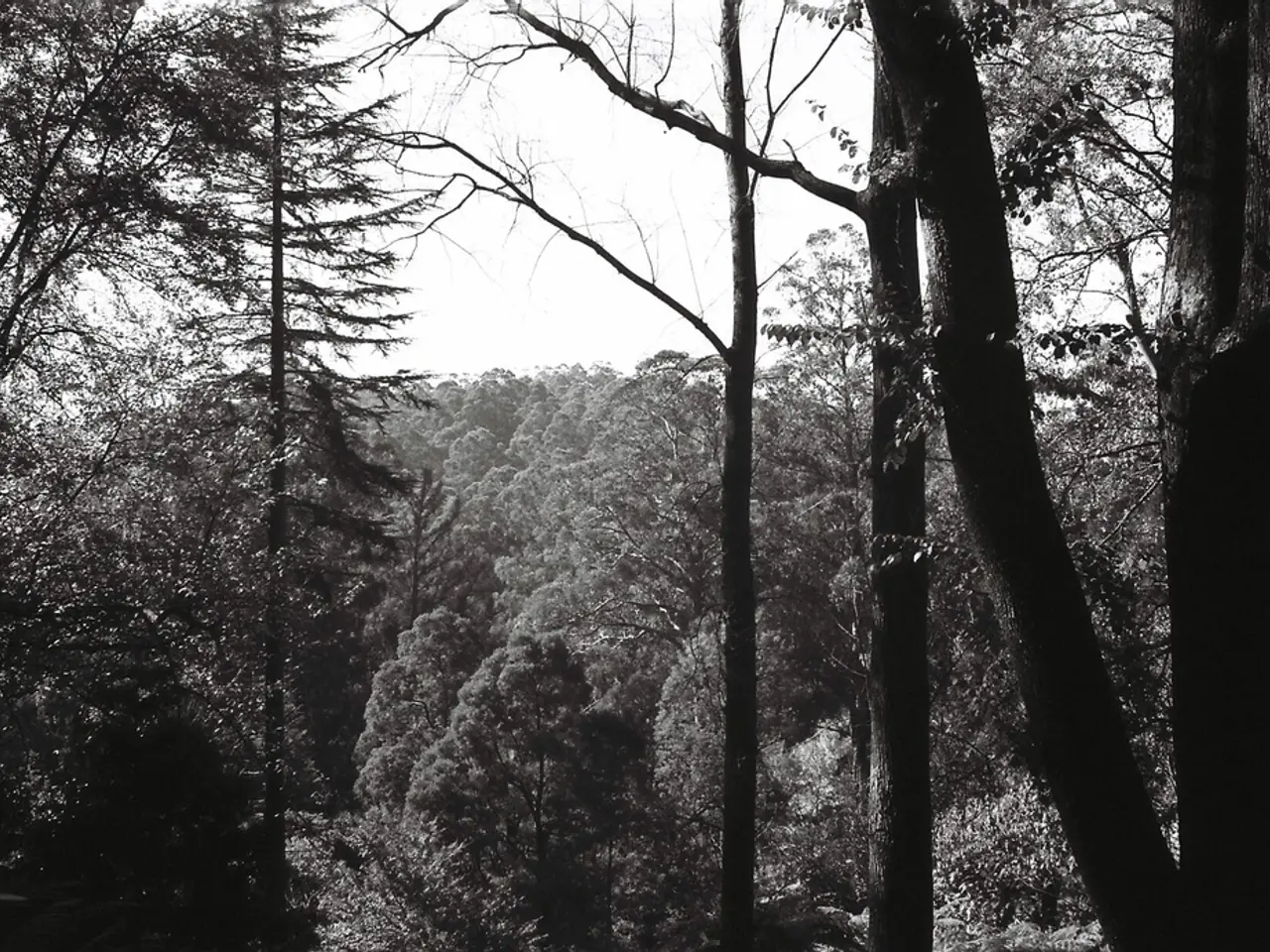Treasured Secrets of Elm Seeds: Timeless Gems from Nature's Storehouse
In the heart of autumn, a remarkable journey begins: the cultivation and propagation of elm tree seeds in the United States. This process, involving several steps, allows for the growth of these iconic trees that symbolize resilience, beauty, and the enduring connection between humanity and nature.
Elm trees, with their diverse species, support various ecosystems, providing habitat and sustenance for various wildlife species. Among the most common species found in the US are the American Elm (Ulmus americana) and the Chinese Elm (Ulmus parvifolia). The American Elm, known for its rapid growth and adaptability to various soils, can grow over 40 feet tall and prefers full sun to partial shade. On the other hand, the Chinese Elm, known for its fast growth and strong disease resistance, can reach heights of up to 50 feet. Other less common species, such as Ulmus laevis, require specific conditions like riparian environments and may be more sensitive to drought.
The process of cultivating elm tree seeds consists of five main stages: seed selection and preparation, sowing seeds, germination and seedling care, transplanting, and post-transplant care.
First, select seeds from healthy, mature trees, store them in a cool, dry place until planting, and stratify them by keeping them in a moist, cool environment for 30 to 60 days to enhance germination.
Next, sow the seeds either outdoors or indoors. For outdoor sowing, plant seeds in the fall or early spring, about ¼ inch deep and spaced a few inches apart, in well-draining soil. Water regularly. For indoor sowing, sow seeds in seed trays or pots filled with a good quality seed starting mix about 8 to 12 weeks before the last frost. Keep the soil moist and warm until germination.
Once the seeds germinate, provide them with full sun and maintain average soil moisture. Transplant seedlings outdoors when they are about 6 to 12 inches tall, spacing them about 40 feet apart for American and Chinese Elms. Harden off seedlings by gradually exposing them to outdoor conditions over a week before transplanting.
Post-transplant care includes watering regularly, especially during the first year after transplanting, pruning branches to maintain a healthy shape and encourage growth, and considering using Dutch Elm Disease-resistant varieties like "Princeton" or "Valley Forge" for American Elms.
By following these steps, you can successfully cultivate and propagate elm tree seeds in the United States. These hands-on activities can inspire future generations to become stewards of the environment and contribute to the preservation of these majestic trees and the ecosystems they support.
Local communities can use elm tree seeds to restore urban green spaces, combatting deforestation and urbanization. Elm seeds, also known as samaras or "elm seeds," vary in size and shape depending on the species. It is the responsibility of stewards of the land to preserve and propagate elm trees for future generations.
Partnering with local environmental organizations, municipal authorities, and spearheading tree planting campaigns, enthusiasts across the US can contribute to the reintroduction of elm trees to their native habitats. The journey of cultivating and nurturing elm tree seeds ensures that the legacy of these majestic trees continues to thrive for years to come.
In the process of cultivating and nurturing elm tree seeds, one can explore various home-and-garden activities, such as gardening and horticulture. By following these steps, not only are you contributing to the preservation of these majestic trees, but you're also making a positive impact on the local ecosystem by supporting wildlife species that thrive in home-and-garden settings and urban green spaces.




